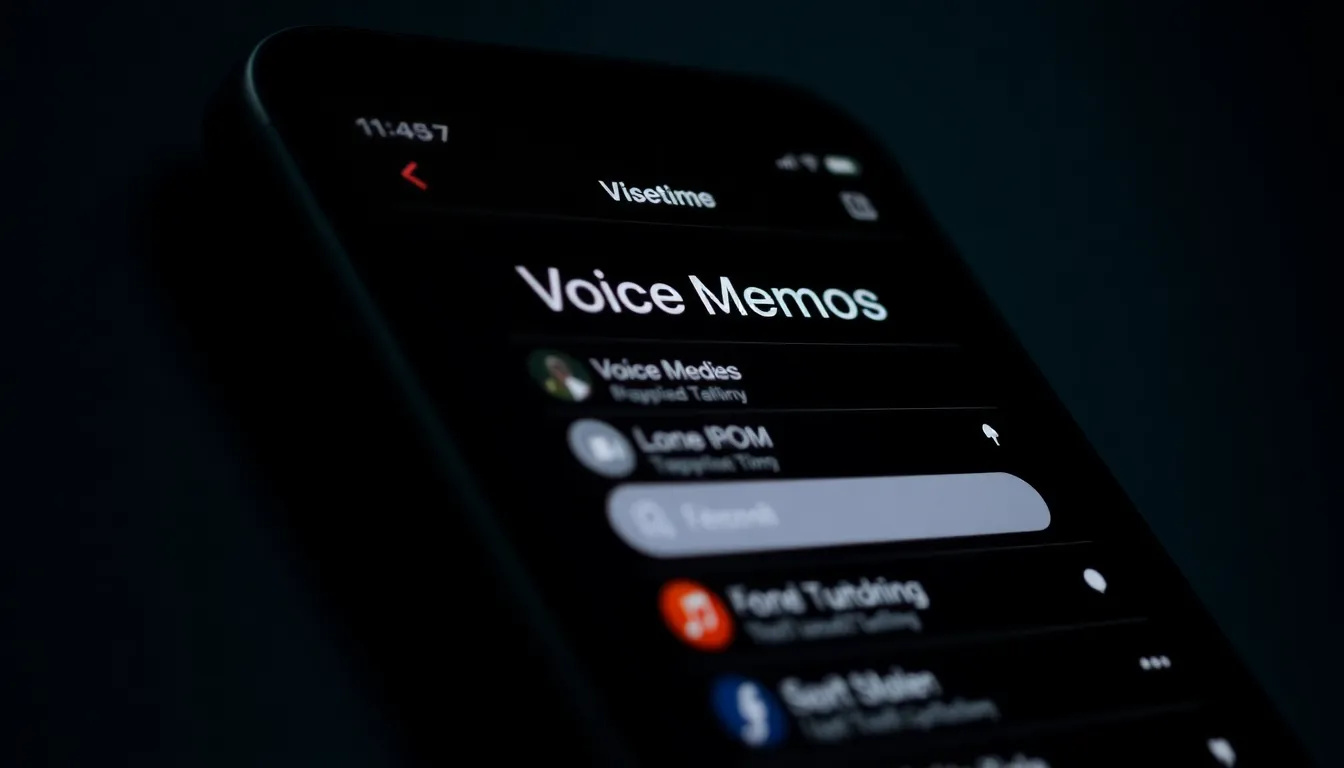Lost in a sea of apps and folders? You’re not alone. Many iPhone users find themselves on a treasure hunt for those elusive voice recordings. Whether it’s a brilliant idea captured mid-shower or a heartfelt message left for a loved one, finding those gems shouldn’t feel like searching for a needle in a haystack.
Table of Contents
ToggleUnderstanding Voice Recordings on iPhone
Voice recordings on an iPhone serve as a convenient method for capturing audio. Users typically rely on this feature for various purposes, from personal notes to professional meetings.
What Are Voice Recordings?
Voice recordings are audio files created with the Voice Memos app. This app allows users to record, edit, and share audio content easily. Whenever an idea strikes, anyone can quickly capture it without needing a separate recording device. Quality audio captures live events or important discussions with clarity. Voice recordings can be saved directly on the device or transferred to other platforms for sharing.
Benefits of Using Voice Memos
Using Voice Memos offers significant advantages to users. First, it allows for quick accessibility to audio notes anytime. Another benefit includes the ease of editing recordings, which enhances clarity and focus. Sharing recordings with friends, family, or colleagues provides seamless communication. Additionally, captured audio can serve as reminders for tasks, making life more organized. Overall, Voice Memos enhances productivity and aids in preserving valuable moments.
Locating Voice Recordings on iPhone

Finding voice recordings on an iPhone can simplify accessing important audio clips. The process begins with the built-in Voice Memos app.
Using the Voice Memos App
Open the Voice Memos app directly from the home screen to find recorded audio. A list of all recordings appears upon entry, showing the dates and lengths. Tap any recording to listen or manage it. For editing, select the recording and choose options like trim or delete. Users can also share recordings via email or messaging apps easily. Organizing audio is straightforward with this tool, enhancing the overall experience.
Searching Through Files
Confusion can arise when searching for specific voice recordings. Utilize the search function within the Voice Memos app for quick results. Input keywords related to the recording, making it easier to locate specific audio content. If numerous recordings exist, previous usage history may assist in narrowing down results. Additional files can be searched using the Files app by choosing the appropriate folder or using the search bar. Keeping recordings organized boosts productivity while reducing frustration.
Alternative Methods to Find Recordings
Several alternative methods exist for locating voice recordings on an iPhone. Users can explore their options through iCloud and Finder on a Mac.
Accessing iCloud
iCloud serves as a reliable option for finding voice recordings. Users should first ensure that their Voice Memos app syncs with iCloud. Accessing iCloud from an iPhone is straightforward; simply open the Settings app and tap on the user’s name at the top. Next, select iCloud, and confirm that Voice Memos is enabled. After that, users can visit the iCloud website or use the Files app on their iPhone. Once in iCloud Drive, recordings can be accessed easily. This method proves effective for those who prefer a cloud-based solution for managing files.
Utilizing Finder on Mac
Finder offers another useful option for locating voice recordings if users own a Mac. First, users must connect their iPhone to the Mac using a USB cable. After opening Finder, the iPhone appears in the sidebar under Devices. Clicking on the iPhone reveals its contents, including voice recordings stored through the Voice Memos app. Users can then navigate to the appropriate folder to find and transfer recordings to their Mac. This method allows for more convenient management and backup of audio files.
Tips for Managing Voice Recordings
Managing voice recordings on an iPhone helps users retain important audio clips effectively. Utilizing organizational methods and backup solutions enhances the user experience.
Organizing Your Memos
Organizing voice memos enables quick access to important files. Users can create specific folders within the Voice Memos app to categorize audio clips, such as personal notes, meeting recordings, or ideas. Tagging recordings with descriptive titles simplifies the process of locating specific memos. Sorting recordings by date or length offers another effective organizational method. Regularly reviewing and deleting unnecessary recordings helps maintain an uncluttered interface.
Backing Up Your Recordings
Backing up voice recordings ensures protection against data loss. Users can leverage iCloud to synchronize recordings automatically with their Apple ID. Enabling backup settings in the Voice Memos app allows seamless access across all devices. Alternatively, connecting the iPhone to a Mac via USB enables users to transfer voice memos directly using Finder. Exporting recordings through email or other cloud services provides additional backup options, ensuring that valuable audio files remain accessible and secure.
Finding voice recordings on an iPhone doesn’t have to be a daunting task. With the right tools and methods users can easily access their audio files without frustration. The Voice Memos app offers a straightforward way to manage recordings while additional options like iCloud and Finder provide further accessibility and organization.
By implementing effective management strategies such as tagging and sorting recordings users can enhance their productivity and ensure important audio clips are always within reach. Regularly backing up recordings is essential for safeguarding valuable memories and ideas. With these tips in hand users can confidently navigate their iPhone’s voice recordings and make the most of this powerful feature.


